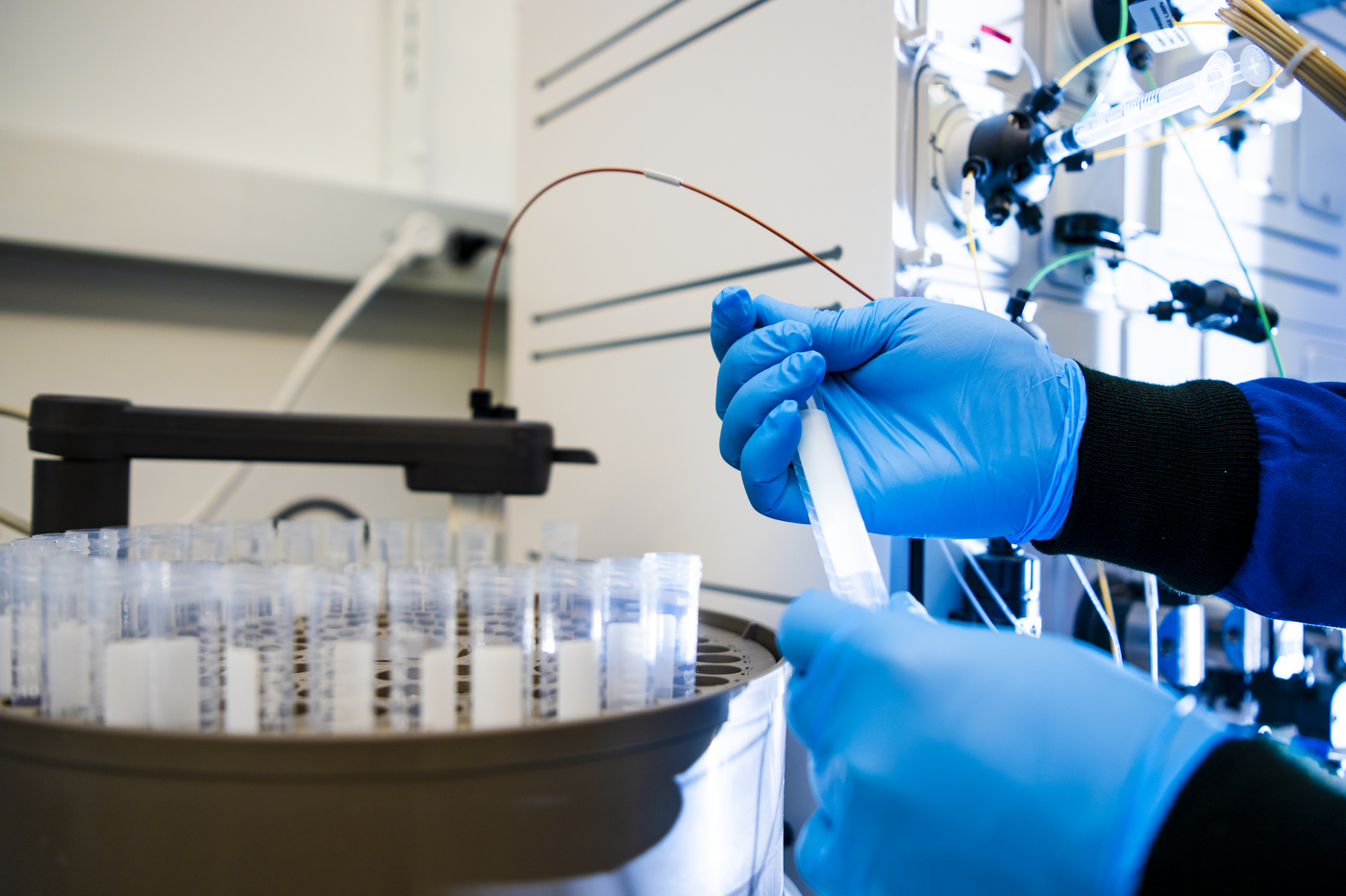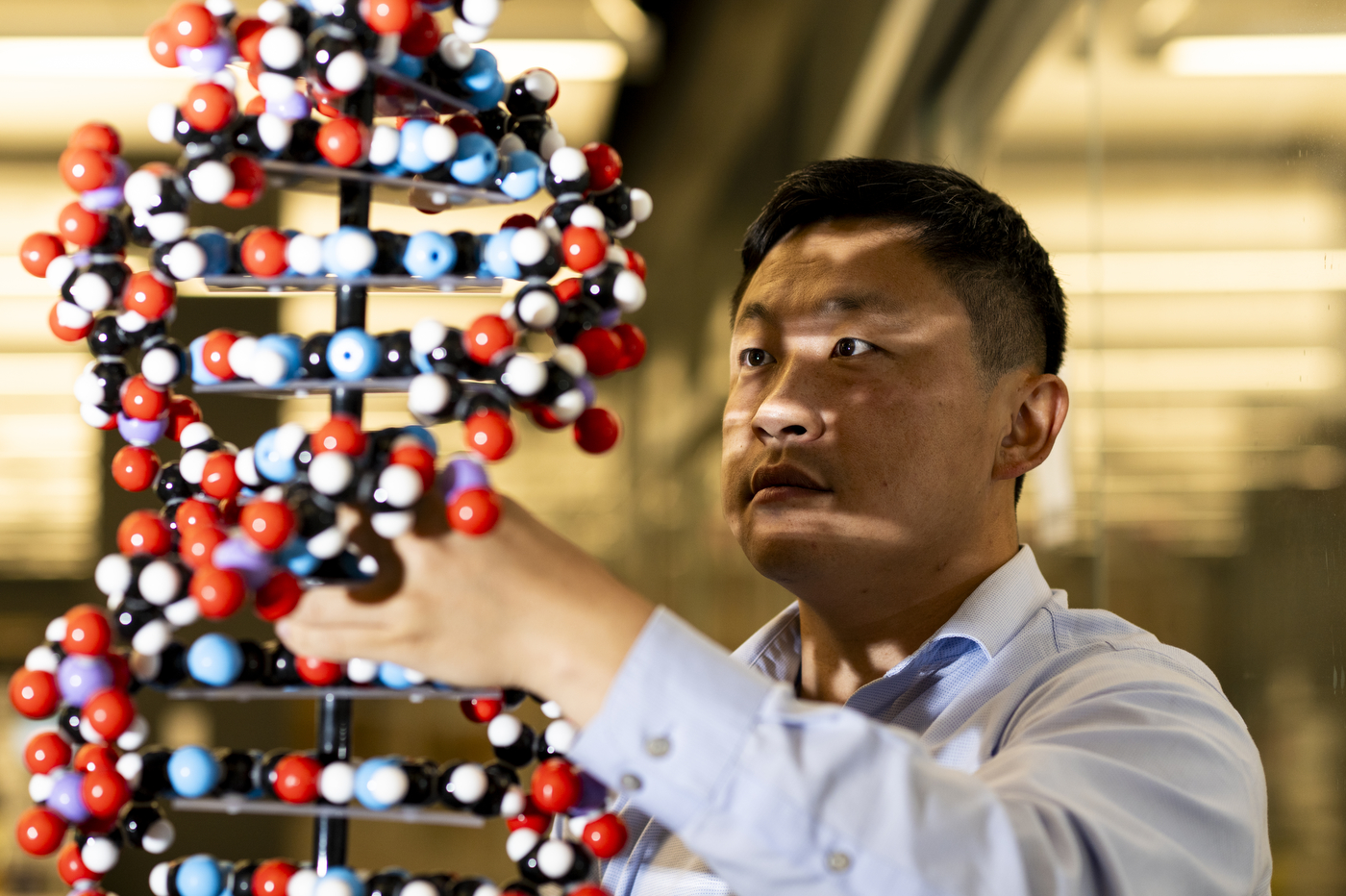Researcher uses gene regulation to improve drug delivery and treatment of rare genetic diseases

Duchenne Muscular Dystrophy is one of the most severe forms of muscular dystrophy. It’s also one of the most rare, as the genetic disease affects one in 3,500 to 5,000 newborn boys. For Ke Zhang, a professor of chemistry and chemical biology at Northeastern University, that’s still one too many.
As part of his Spark Fund awarded research, Zhang is working on a novel form of drug delivery approach for improved gene regulation that could change the status quo. Helmed by pacDNA LLC, Zhang’s Center for Research Innovation-supported spinout, Zhang’s approach to gene regulation is built on oligonucleotides. These small but mighty strands of DNA-like molecules, along with a carrier called bottlebrush polymer, could be the trick to targeting deadly genetic diseases like DMD and cancer.
Traditionally, drugs consist of small molecules that impact specific proteins in the body, preventing a protein from working or activating a protein to make it work better. Gene regulation techniques go directly to the source, affecting the mRNA encoding the protein so that the problematic proteins are never created in the first place. The method Zhang is using, called exon skipping, goes one step further, causing cells to skip over faulty sections of the genetic code, called exons, leading to the production of functional proteins.
“For the exon skipping approach, we try to correct the mistake in the mRNA so the correct proteins can be produced,” Zhang says. “That’s where our oligonucleotide therapy operates.”
At this point genetic manipulation is a well established method of designing drugs. The COVID-19 vaccine makes use of it, delivering a strand of mRNA into the body that encodes a segment of the virus’ spike protein.



The oligonucleotides that Zhang is using are much shorter than the strands of genetic material typically used for gene therapy. They are in fact not designed to encode at all but to bind with a complementary target like mRNA. By binding to mRNA, the oligonucleotide causes the mRNA to degrade, or to be processed differently within the call, which can affect their translation into the right proteins and the progression of the disease.
Gene regulation techniques are revolutionizing drug development, but there are still challenges involved. If a drug cannot be delivered to the correct organs or cells, there can be serious unintended side effects like a decreased therapeutic window and increased toxicity, on top of adding costs for both patients and providers. When it comes to DMD specifically, Zhang says the current drugs are significantly more inefficient than they should be for such a serious and rare disease.
“Seventy percent of the injected dose is cleared by the kidney into urine within the first 24 hours,” Zhang says. “What happens to the other 30%? … We estimated using published data that only a fraction of a percent goes into the muscle.”
Zhang hopes by making exon skipping more efficient than using traditional bottlebrush technology, pacDNA can solve some of these problems, especially for treatment of DMD, which his Spark Funded research is focused on.
“These boys’ muscles lack a critical protein to link the muscle fibers together, so their muscle tends to break and once that break happens, it is irreversible,” Zhang says. “They continually lose muscle, and by age 9 to 14 they become non-ambulatory and then by age 20, some die.”
“It’s a terrible disease, and the problem is they have a mutation in some of the exons, and our goal is to use oligonucleotide to skip that exon that contains the problem so a partially correct protein can be produced,” Zhang adds. “This helps at least prevent the disease from progressing.”
Although this research is focused on targeting DMD, Zhang says it’s a generalizable method that could be applied to other diseases, like non-small cell lung cancer, neurological disorders and other rare genetic diseases.
Zhang’s approach to gene regulation makes full use of Brushield, pacDNA’s proprietary technology that not only enhances the potency of oligonucleotides but reduces their side effects when used as drugs for patients. In preclinical studies, Zhang found Brushield can increase delivery to target organs by two orders of magnitude and enhance the potency by anywhere between five to 100 fold (depending on the drug) compared to current state-of-the-art methods of drug delivery.
It also turns the traditional drug discovery process on its head, opening the doors to find more rapidly finding clinical leads.
“Typically, discovery of a drug is very difficult,” Zhang says. “You need to find small molecules that bind to specific pockets of proteins without targeting other proteins, but for oligonucleotides you can read the sequence of the mRNA and find a complementary sequence and that would be your drug. The drug is really an informational molecule, and the discovery is made a lot easier. Our Brushield technology can be there very early in the development process”
Cody Mello-Klein is a Northeastern Global News reporter. Email him at c.mello-klein@northeastern.edu. Follow him on Twitter @Proelectioneer.






